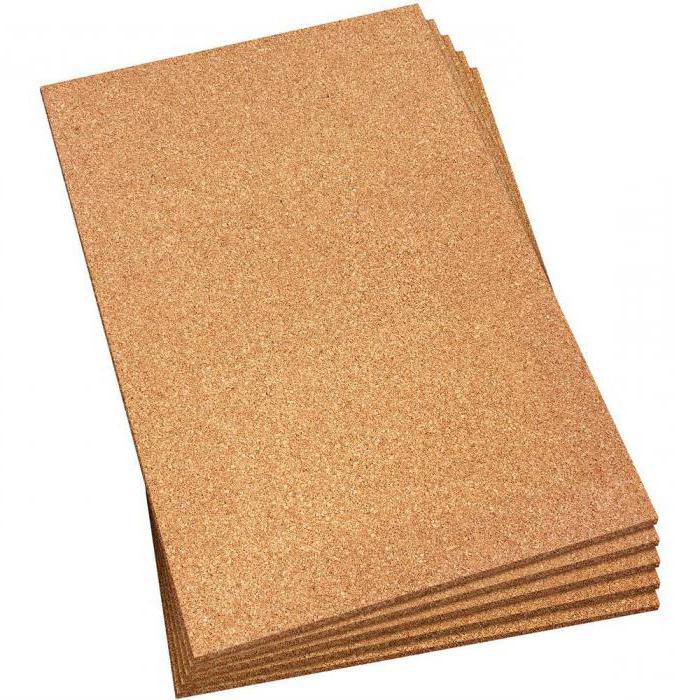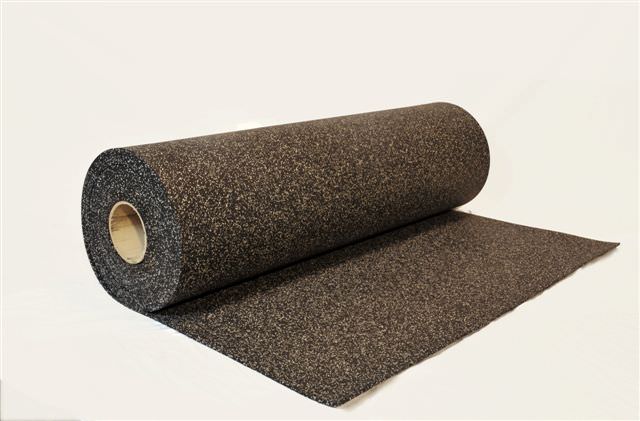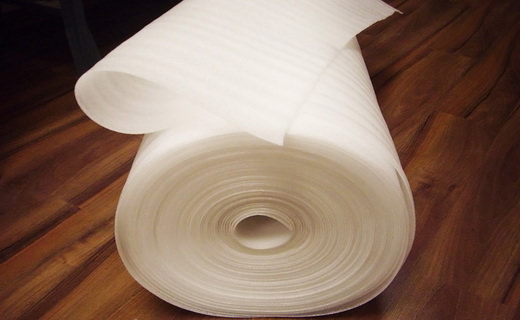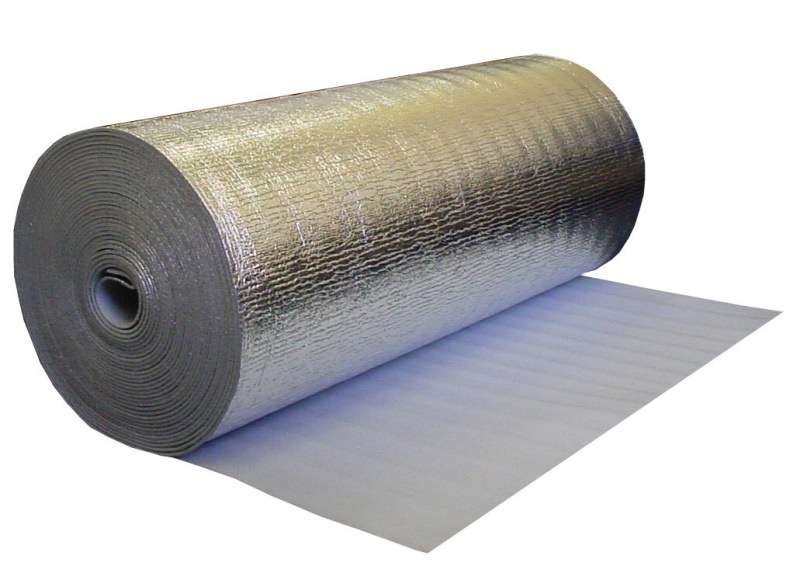Laminate flooring has long entered our daily life. From a wide range of products, laminate is recognized as one of the most optimal solutions. Choosing it, the consumer pursues such goals as stability under load, excellent appearance, durability, price-quality ratio.
In addition, it is quite easy to install, so this work can be done not only by a professional, but also by an amateur. However, not everyone knows that the reliability and appearance of the laminate are 80 percent dependent on the substrate.
Surface preparation
Before choosing a substrate, it is necessary to carry out surface preparation of concrete floor.
The very first and foremost is. If you lay the material on an uneven floor, then it loses its functionality:
- laminate panels will begin to sag under increased load;
- the seams between the panels may come apart;
- the boards will start to creak;
- possibly swelling of the coating.
Another important feature that can harm the laminate is high humidity, which can penetrate from under the screed. That is why cracks in the cement floor need to be carefully repaired.
There are two optimal options for leveling a concrete floor: a cement-sand screed and a self-leveling mixture.
So, when we have the perfect laminate flooring ready, we can safely proceed with the selection of the substrate.
Advice! If you have made a screed, then you need to wait as long as possible for all the moisture to evaporate. You can check this as follows, put a glass jar with the neck down, if after 10 hours there is no perspiration, you can start working.
Why do you need a backing
Its main functions are sound insulation, water absorption. In addition to all this, it serves as a good shock absorber: when you step on the laminate, it bends, sags, while the substrate softens the deformation. In addition, it hides small unevenness in the concrete floor and acts as a heat insulator.
It is important to consider the thickness of the material! It may seem that the more the better. But you need to take into account the fact that, with a thick layer, locks (joints of laminate panels) may begin to break. The thickness of natural substrates is 2 to 5 mm.
Types of laminate substrates
In order to choose the right material, let's talk about its functional characteristics.
Cork or cork
Cork or cork backing is an environmentally friendly material. It is recommended for use in children's rooms and bedrooms.

The main raw material in the production of this material is the bark of cork oak, under pressure it is pressed and a natural glue is released - suberin, which reliably connects the pieces of cork, the material becomes homogeneous. On sale you can find cork backing in the form of rolls and sheets.
Advantages:
- does not sag or deform over time;
- increases the sound and heat insulating properties of the material;
- fire resistance;
- the ability to maintain shape in all directions;
- has antifungal properties.
Disadvantages:
- afraid of moisture;
- quite high price;
- not suitable for installing a warm floor;
- she needs a perfectly flat floor.
There are varieties of cork substrates: bitumen-cork and rubber-cork.
Bituminous cork
For its manufacture, cardboard or strong paper is used, a bituminous layer and cork chips pressed into it are applied to its surface. Should be laid such a substrate with a cork layer down, thus, it will protect the laminate from moisture and remove accumulated moisture.

Advantages:
- provides waterproofing;
- resistance to moisture.
Disadvantages: high price, since this material contains bitumen, its price increases.
Rubber-cork
Manufactured using synthetic rubber. Its main positive characteristics are noise absorption, moisture resistance, environmental friendliness of the material. For everyone who has thought of making "warm floors" in the house, a rubber-cork backing is ideal.

Advice! If you decide in the kitchen or other rooms with high humidity, then you should pay special attention to the waterproofing properties of the material, in which case it is advisable to choose bitumen-cork. In all cork coverings, air moves under the laminate, which prevents condensation from appearing on the surface.
Izolonovaya
In other words, polyethylene foam. It is one of the most demanded. It is produced in the form of rolls and sheets. The thickness of the sheets ranges from 2-5 mm.

Advantages:
- the material is absolutely waterproof;
- low cost;
- environmental Safety;
- destructively affects mold, fungus;
- ease and simplicity in work.
Disadvantages:
- low level of noise insulation;
- deformation with active use;
- loses volume under load;
- low amortization properties.
Foil
This material consists of polystyrene and aluminum foil, which gives it a heat-insulating effect, reducing heat loss in the room.
Advice! It is necessary to lay such a substrate with the foil upwards so that it retains its useful properties.

Advantages:
- not afraid of mold and moisture;
- acceptable price;
- thermal insulation, sound insulation;
- does not absorb moisture.
Disadvantages:
- at high loads, it bursts and turns into ordinary polyethylene, is quickly pressed;
- short-lived.
Advice! This type of underlay can be used under the underfloor heating system.
Extruded expanded polystyrene
High-quality material of a new generation, which is beginning to be actively used in thermal insulation of floors. Its composition is filled with air molecules.

Advantages:
- high thermal insulation performance;
- lack of moisture under the laminate;
- provides air movement.
Disadvantages:
- leveling ability is weak;
- when used, a large amount of unused material remains.
How to install a cork backing
- Before starting work, it is necessary to unpack the roll and leave it at room temperature for a day so that the material adapts to room conditions and humidity.
- It is necessary to thoroughly clean the base, fill up all cracks. This material, when laid on a concrete floor, needs to be treated with an antifungal mixture, this will help to avoid the occurrence of mold in the future.
- You should pay attention to waterproofing, most often they use a polyethylene film, which is cut into strips of the required length with a margin of 3-4 cm.
- It's important to know that the underlay is laid across the laminate panels! We prepare it of the required size and length. You need to lay it with a distance of 1 cm from the wall, and the next sheet is placed end-to-end, without overlaps and gaps. We connect them with construction tape.
- The last final step is the treatment of the substrate with a water-repellent compound, which will provide additional protection against dampness and moisture.
Let's summarize:
This material is not a cheap pleasure, but if you decide to make a high-quality floor that will serve you for many years, stop your choice on it.
Advice! The underlay must not be laid in two layers!
Laying the polystyrene foam backing
In order to lay the underlay we need to prepare the subfloor. To do this, as mentioned above, you need:
- leveling the cement-sand screed;
- clean the surface from dirt and other irregularities, if there are cracks or other defects, you need to putty them, it must be clean, even and dry;
- in order to lay extruded polystyrene foam, you do not need additional fastening materials, glue, tape, you need to lay it across, at an angle of 45 degrees;
- the last stage, we place it as close to each other as possible in a checkerboard pattern.
Laying an isolon substrate
Placed on a prepared concrete floor. Cut the strips to the required length and overlap each other. Everything should be fastened with ordinary tape. It is necessary to maintain the gap between the wall and the laminate when laying.
Blitz tip:
The laminate should only be laid on a flat surface so that the differences do not exceed 2 mm.



